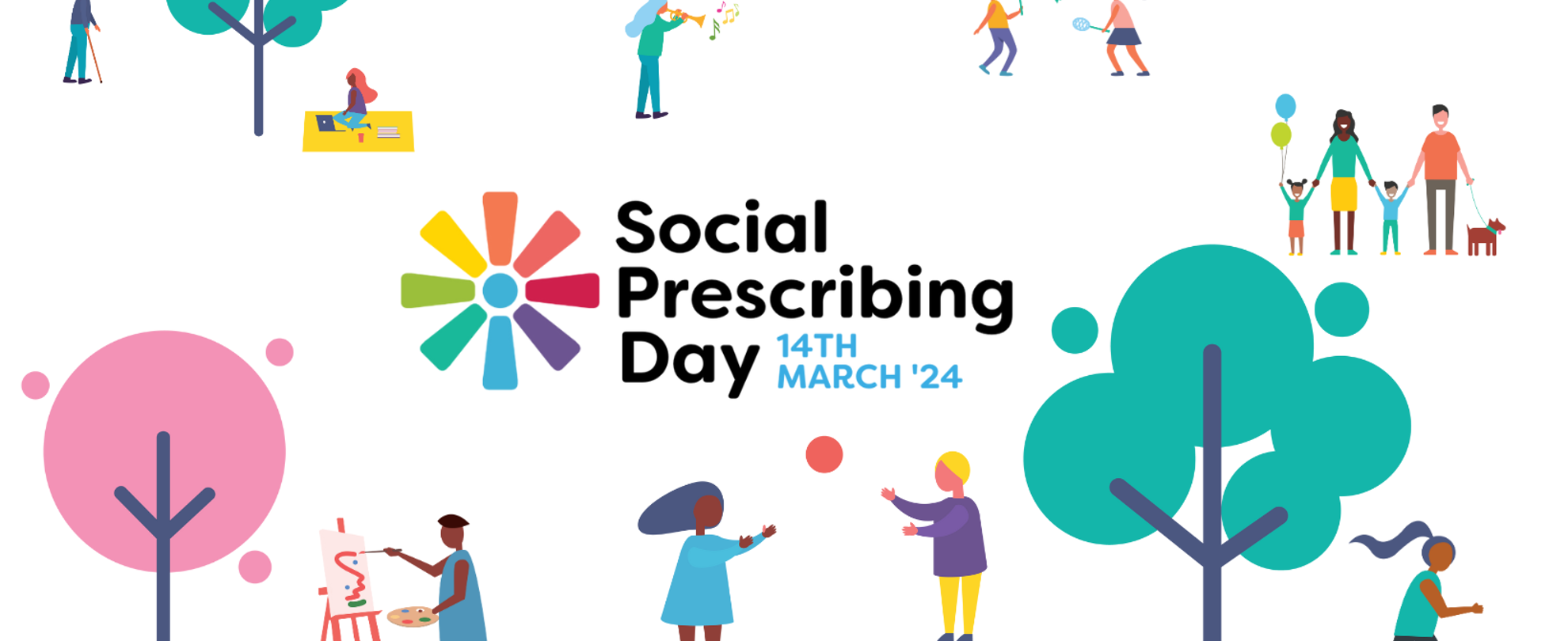
Emma has been a Registered Dietitian for over 17 years and has experience in adult and paediatric dietetics. She has been the Editor of NHD for seven years, steering the editorial content and supporting the production process. Emma currently works in industry.
Emma Coates, RD
Social prescribing: community support for health and well-being

Social prescribing is a vital part of the health and care system. Not all of the things that affect our health and well-being can be addressed by clinical services and healthcare professionals.(1) So, social prescribing is a way to connect people with non-clinical support, various groups and activities that can improve health and well-being.(1) This support may be required to meet someone’s practical, social or emotional needs.(2)
It’s available to everyone across the lifespan but may be particularly beneficial for anyone who:(2)
- has one or more long-term conditions;
- needs support with low-level mental health issues;
- is isolated or lonely;
- has complex social needs which affect well-being.
COMMUNITY REFERRAL
Sometimes referred to as ‘community referral’, social prescribing offers people a variety local support.(3) Services are often provided by voluntary and charitable organisations and can include: befriending, creative activities, group learning, gardening, cookery, healthy eating advice, plus a variety of physical activities.(3)
Examples of how social prescribing can support someone:
- Helping someone to join a gardening or cookery group to socialise and learn about food and eating well.
- Working with someone to take up a form of exercise that they’re comfortable with.
Social Prescribing Link Workers support the process and work collaboratively with local groups and services.(2) Support often begins with a referral to a Social Prescribing Link Worker from a GP, hospital-based healthcare professional or other organisation, such as a charity.(1)
Social prescribing is:(1)
- practical, social and emotional support;
- helping people to live the best lives they can;
- taking pressure off the NHS;
- tackling health inequalities;
- the glue that links voluntary organisations with people who need their help.
Social prescribing services across the UK

Social prescribing is part of the NHS Long Term Plan, which aimed to refer at least 900,000 people to social prescribed services by 2023/24.(2) In England, there are around 3500 Social Prescribing Link Workers in post and more than 2.5 million people have been referred to Link Workers.(4)
In Wales, social prescribing has become a key commitment for the Welsh government,(5) which has developed the National Framework for Social Prescribing.(6) This provides a description of social prescribing in Wales and a plan of how to provide it throughout the country.
The Scottish government supports social prescribing(7) with the Scottish Social Prescribing Network, which was established in 2020 and is representative of eight social prescribing programmes across the country.(8) Northern Ireland also advocates social prescribing.(9)
Does social prescribing work?

There’s a growing body of evidence that shows social prescribing has a positive impact on health and well-being. It also has financial benefits for the health economy. However, there are often barriers to effectively implementing services and support.
In October 2023, The National Academy for Social Prescribing (NASP) published a report on the economic case for social prescribing.(10) From a scoping review of 26 different studies, the report found that social prescribing can reduce the pressure on primary and secondary healthcare services. This includes reductions in GP appointments and A&E visits. However, more research is needed to generate further data and fully identify the financial impact it has.(11)
A review of literature reporting on social prescribing interventions to support older people living in poverty was published in 2022.(12) It reviewed research predominantly from the UK with additional studies from the US, Australia, Portugal and South Africa. It highlighted some key themes, which included fuel poverty and food insecurity.
Food insecurity can impact physical and mental health, with increasing incidence over recent years due to rising food and energy costs.(12) The review found that there is a range of effective interventions to support those experiencing food insecurity. These include community-based food activities and education and mobile and community-based food bank provision. Despite the effectiveness of these approaches, there are barriers to alleviating food insecurity. Lack of funding and support for community spaces to provide food, limited staffing and volunteer capacity to run services, and lack of cold storage to provide improved nutritional quality of food available were common obstacles identified by the review. The stigma of using a food bank was also identified as a barrier for older people in need.
Physical activity

Social prescribing can play a key part in improving physical activity levels if appropriate support is available. In 2022, a review of social prescribing and physical activity found that those from low socio-economic backgrounds or those with multiple morbidities are likely to need support for up to two years from a social prescribing scheme to achieve any beneficial physical activity outcomes.(13)
It also identified that it is important to identify those who will benefit most from a particular social prescribing approach for physical activity.
Those who are referred to an exercise on referral approach are expected to have greater self-motivation and capability to adopt new health behaviours with minimal support.(13)
This may not be suitable for other populations who need greater support and direction. Identifying the needs of the person before referral to activity options is crucial, as additional support may be required. For example, supporting those with mental health needs such as depression and low self-esteem.
WHAT'S THE FUTURE OF SOCIAL PRESCRIBING?
The future of social prescribing has been carved out via recognition of the approach within various UK Government health policies, which include the Loneliness Strategy, the Suicide prevention strategy and the Major Conditions Strategic framework.
According to the NASP, the key priorities for social prescribing over the next five years could include:(4)
- ensuring each GP practice has access to a Social Prescribing Link Worker;
- support for frontline community organisations to provide social prescribing services through Shared Investment Funding (additional support from the National Lottery Community Fund);
- improved data via a national hub to ensure that social prescribing becomes the norm in the NHS;
- providing high-standard training and development programmes for Social Prescribing Link Workers and leaders;
- making prevention a priority by embedding social prescribing across the civic and community landscape, including workplaces.
Social Prescribing Day – 14th March

Each year, Social Prescribing Day falls on 14th March. Initially launched in 2019, the day marks an annual celebration of the people, organisations and communities who are part of this valuable network. The event doesn’t have a particular theme each year but it’s a great opportunity to shed light on this important work and celebrate the positive impact it can have. If you have any social prescribing-related case studies or stories, why not make some noise and share them? #SocialPrescribingDay
References
-
-
- National Academy for Social Prescribing (2024). What is Social Prescribing? What is Social Prescribing? | NASP (socialprescribingacademy.org.uk)
- NHS England (2024). Social prescribing NHS England » Social prescribing
- The King’s Fund (2020). What is social prescribing? What Is Social Prescribing? | The King's Fund (kingsfund.org.uk)
- National Academy for Social Prescribing (2023). The Future of Social Prescribing in England. The future of social prescribing in England - National Academy for Social Prescribing | NASP (socialprescribingacademy.org.uk)
- Public Health Wales (2023). Social Prescribing. Social Prescribing - Public Health Wales (nhs.wales)
- Welsh Government (2024). National framework for social prescribing. National framework for social prescribing [HTML] | GOV.WALES
- Scottish Government (2022). Advice and guidance: Primary care services - mental health and wellbeing: resources. 3 Social Prescribing Tools - Primary care services - mental health and wellbeing: resources - gov.scot (www.gov.scot)
- Scottish Social Prescribing Network (2024). SSPN – Scottish Social Prescribing Network (scottishspn.org.uk)
- Health and Social Care (2021). Latest developments in social prescribing. Latest developments in social prescribing - DOH/HSCNI Strategic Planning and Performance Group (SPPG)
- National Academy for Social Prescribing (2023). Report: Building the economic case for social prescribing. Building the economic case for social prescribing report (socialprescribingacademy.org.uk)
- National Academy for Social Prescribing (2024). Evidence: Building the economic case for social prescribing. Economic evidence – National Academy for Social Prescribing | NASP (socialprescribingacademy.org.uk)
- Sabey A, Seers H, Chatterjee HJ and Polley M (2022). How can social prescribing support older people in poverty? A rapid scoping review of interventions. nasp-evidence-review-older-people.pdf (socialprescribingacademy.org.uk)
- Polley M and Sabey A (2022). An evidence review of social prescribing and physical activity. review-of-social-prescribing-and-physical-activity_.pdf (socialprescribingacademy.org.uk)
-

